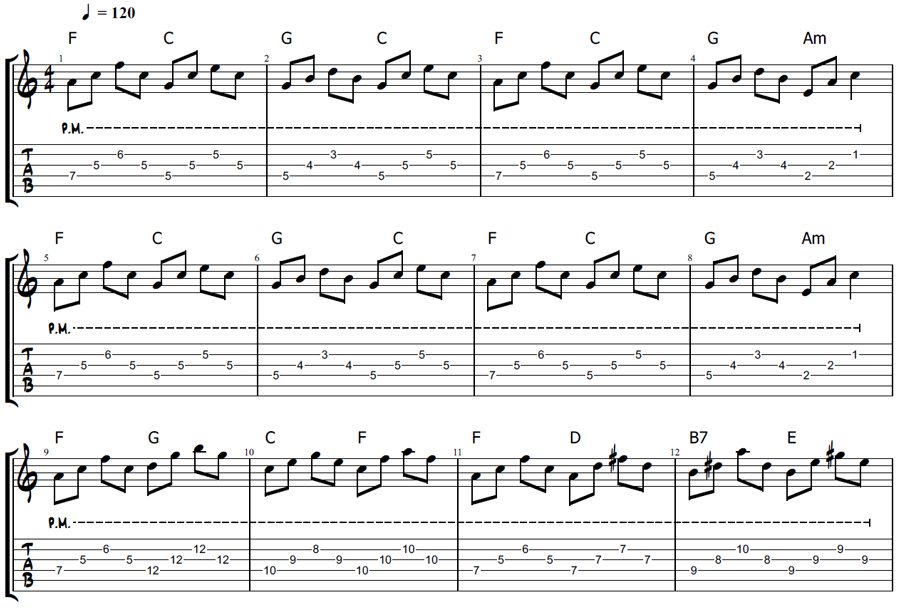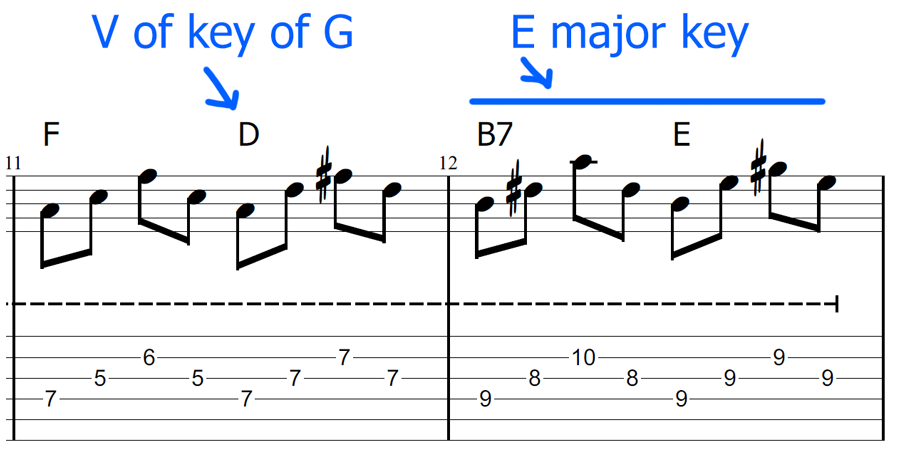Building Riffs With Triads
How To Build Creative Progressions Using 3 Notes Chords
In this tutorial, I will show you how to use triads to create exciting lines that move horizontally across the fretboard. Open chords are great but to be more creative, using triads can be a great option:
First, please have a look at the video below, you'll find the discussion later on this page:
Video Guitar Tabs

Creating Progressions With Guitar Triads
We already have discussed about triads on guitar in my past tutorials, but here's a quick recap.
Triads are three-note chords that form the foundation of harmony in music. They consist of a root note, a third interval, and a fifth interval above the root.
Depending on the quality of the third (minor or major) and the fifth (augmented, perfect or diminished) a triad can be major, minor, diminished or augmented.
Triads are often used in rhythm guitar playing to provide harmonic support.
By knowing different triad shapes and their positions across the entire fretboard, guitarists can create interesting chord progressions and variations while strumming or fingerpicking.
In the sequence above, I play guitar triads in arpeggio style (one note at a time), using palm muting to gently mute the notes and create a nice rhythmic effect.
A bit of delay creates an additional nice sonic texture!
Harmonic Analysis
The foundation progression for the riff is: IV I V I in the key of C, which is F, C, G and C.
On bar 4 and 8, C is substituted by its relative minor, Am, which creates a nice effect.
Here's below the chords in the key of C:
| Key | I | ii | iii | IV | V | vi | vii |
|---|---|---|---|---|---|---|---|
| C | C | Dm | Em | F | G | Am | B dim |
So far so good, from bar 1 to bar 10 we use only diatonic triads without any uncommon situation.
Things get more interesting from bar 11.
Across the Circle of Fifths, the nearest key to C is the key of G, which has an F# instead of F.
So, by simply raising F to F#, we can move from the key of C to the key of G.
Moreover, F# is the third of the D major chord, which in the key of G is minor:
- D minor: D F A
- D major: D F# A
So, by playing a D major chord in the second half of bar 11, we modulate to the key of G, leaving the key of C.
And then, from D major, we switch to B7 (played with a shell chord shape), which is the dominant V chord of the key of E major.
Notice the pleasant effect sound by the final B7 to E major cadence (V -> I).
Here's below the chords in the key of E major:
| Key | I | ii | iii | IV | V | vi | vii |
|---|---|---|---|---|---|---|---|
| E | E | F#m | G#m | A | B | C#m | D# dim |
So, to recap, we use diatonic triads in the key of C from bar 1 to 10, then, from bar 11, we perform a couple of modulations, landing to the key of E:

Building Songs With Triads - Conclusions
Ok, we have just seen how to turn a common, potentially boring progression into something more interesting.
Triads can be a great option to have in your songwriting toolkit.
By moving horizontally across the fretboard, and don't limit yourself to position near the headstock, you can come up with creative solutions.
Here are the free downloads for this lesson:
That's it! To stay updated on new tutorials, subscribe here.